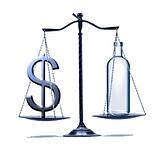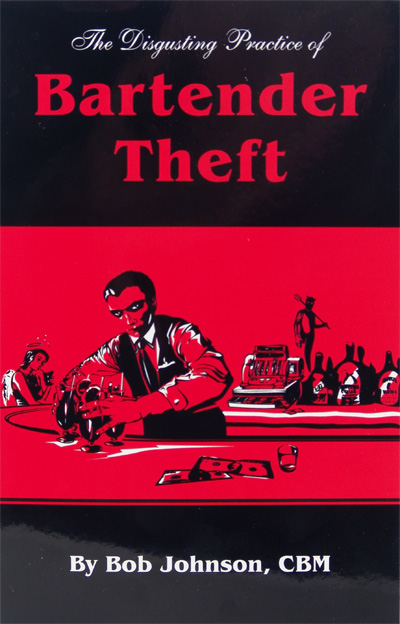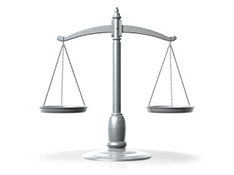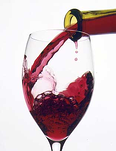 Your market and competitor research will likely reveal that most bars that are successful pay a lot of attention to customers. In fact, great service is one of the surest ways of drawing repeat customers. To draw more patrons to your bar on a regular basis, you do not have to spend a lot of money. However, you do have to think like a customer; you will likely notice a few things that need to change at your establishment:
Your market and competitor research will likely reveal that most bars that are successful pay a lot of attention to customers. In fact, great service is one of the surest ways of drawing repeat customers. To draw more patrons to your bar on a regular basis, you do not have to spend a lot of money. However, you do have to think like a customer; you will likely notice a few things that need to change at your establishment:
- Waiting lines. If there's a line outside the door, all it takes is a little creativity to either bring the line inside or disguise it on the outside. Remember, those people waiting outside are probably thirsty and they'd be more than happy to do their waiting in a courtyard area, at a temporary bar, or in a cordoned-off outside area where drinking is permitted. Of those who are prepared to brave the line, most will do so gladly if they know they can be inside within 30 minutes. Also, it's simple to change waiting-time perceptions by making that wait a little more comfortable or entertaining.
- Parking can be a big hassle in many venues. If there tends to be a traffic jam outside your venue, consider installing a valet service on busy nights or posting a staff member outside to direct patrons to parking around the back or down the road. Signs pointing to parking areas also help.
- Offer creative extras. Whether it is free hand massages, glow sticks, or a live band outside, making the outside dazzling will make people all the more eager to see the inside of the bar.
- Think about your TV screens and sound system in relation to your waiting area. Can waiting people catch a glimpse of the big game? Can they hear the music inside? These things will keep a waiting person keen on staying around, whereas a blank brick wall and a disinterested bouncer isn't inviting to anyone.
- Keep clientele informed. If there's a wait for a table, set up an electronic sign indicating how long their expected wait will be. Add to this anything you can think of that will make their wait more entertaining—sports scores, trivia questions, coming events. It might be a little more work, but if you can keep just five people from leaving, it'll be worth it.
- Freebies and incentives. Offer your waiting patrons a little something extra and they won't just "not mind" waiting, they'll do so gladly. Coupons to be used on a later date are a good option.
- Create a waiting area if you know that there tends to be a wait to get into the bar. This can include comfy chairs or an outside patio where customers can wait and sit. This is a great way to make sure that customers do not get tired and leave.
- It doesn't have to be expensive. Giving your waiting customers something to do doesn't have to be expensive, high-tech, or take up your employees' valuable time. Consider offering free reading material in your waiting area or even Internet access.
- Act first. A long wait doesn't seem quite so long when a staff member keeps you informed on how long your table will take. Don't wait for the customer to ask you; go out and tell the customer.
- Make your bar irresistible. Why will some bar patrons wait forty-five minutes to get into a bar instead of giving up and going elsewhere? They have a sense of urgency to get inside. Whether you are offering a hot live act, celebrities, or some other enticement, make sure it is worth the wait
- Offer free appetizers to waiting patrons. A tray with a nice selection of different foods from your menu can actually be a great advertisement and may even generate increased food sales.
- Supply your customers with pagers. Offering waiting customers a pager to notify them when their table is ready is a great alternative to the usual "public address" announcement or a yell over the crowd. When a table becomes available, your host simply dials the waiting customer's number, and wherever they are in the building (or outside), they know that their table is ready.
- Build suspense. If it appears as though there is something really exciting going on in your bar, people will be willing to wait to get inside.
- Make sure waits are fair. Patrons who have been waiting for a whilewill get rightfully angry if it appears as though the staff are letting in people who are paying extra or who are simply "flirtier." Make sure that your security staff respect the queue and try to get everyone inside in an orderly and fair manner.
- Keep your customers informed. Be honest. If there'll be a half-hour wait, don't tell them it will be a fifteen-minute wait and hope they don't walk out. Similarly, ensure your staff keeps them updated on the wait so they know they haven't been forgotten. Small things like this make a big difference in the eyes of a waiting customer.
Customers are your mainstay in the bar business. If you treat them better than other bars would, you are ensured repeat business. Customers love to feel like VIPs, and the more patrons you make feel like this, the more business you will have. Share these tips with your staff to ensure they treat every customer as through he or she were a star.
This article is an excerpt from the The Professional Bar & Beverage Managers Handbook: How to Open and Operate a Financially Successful Bar, Tavern and Nightclub, authored by Douglas Robert Brown, published by Atlantic Publishing Group. This excerpt has been reprinted with permission of the publisher. To purchase this book go to:

 There are many bars that go out of business each year. This is because the market for new bars is a challenging one. If you are in an area that has new bars opening all the time and a clientele who is always seeking the latest thrill, you need to work extra hard to ensure that your establishment stays exciting enough. There are many small details that can mean the difference between a bar that is merely surviving and one that is prospering beautifully. In this chapter, you will learn the small details that can push your success higher than ever. Not all of these tips are expensive. Many take only ingenuity and some effort, but the results can be spectacular!
There are many bars that go out of business each year. This is because the market for new bars is a challenging one. If you are in an area that has new bars opening all the time and a clientele who is always seeking the latest thrill, you need to work extra hard to ensure that your establishment stays exciting enough. There are many small details that can mean the difference between a bar that is merely surviving and one that is prospering beautifully. In this chapter, you will learn the small details that can push your success higher than ever. Not all of these tips are expensive. Many take only ingenuity and some effort, but the results can be spectacular! Industry studies have consistently shown that a full 25% to 30% of a bar's liquor inventory never converts into registered sales. That is the equivalent of about six to eight 1.25 oz portions per bottle (which should yield at least 25 portions.) This loss of liquor volume--due to unauthorized comps, over-pouring, spillage or theft--should be of great concern to any bar manager.
Industry studies have consistently shown that a full 25% to 30% of a bar's liquor inventory never converts into registered sales. That is the equivalent of about six to eight 1.25 oz portions per bottle (which should yield at least 25 portions.) This loss of liquor volume--due to unauthorized comps, over-pouring, spillage or theft--should be of great concern to any bar manager.  Many of the best bartenders learn most of their useful trade while at work. This is because bartending schools vary widely in quality. Some emphasize the preparation of rarely requested drinks without stressing useful skills such as bar management, customer satisfaction, and customer safety. If you are hiring a bartender, you should consider the school he or she has attended, but testing practical skills will give the best clue of how many useful skills the person has for waiting on your bar. If you are considering attending a bartending school, investigate the school to make sure that you will be taught skills such as organization and techniques of serving. A good bartending school or course will emphasize dealing with customers. Be wary of a bartending school that is more of a "drink mix" school, stressing mixing many types of drinks without teaching anything besides drink preparation. There are many of these sorts of schools out there, which claim that a bartender's greatest asset is knowing how to mix an endless variety of drinks. Learning to mix the latest drink is relatively simple once one looks up the recipe, and most patrons will order the most popular drink of the moment rather than some obscure mix. A bartender with a good grasp of people and basic bartending techniques is usually more useful than the bartender who only knows how to mix hundreds of drinks from memory but has few skills besides. In some cases, an employee with a hospitality degree is better able to handle the bar job than someone who has attended a bartender school.
Many of the best bartenders learn most of their useful trade while at work. This is because bartending schools vary widely in quality. Some emphasize the preparation of rarely requested drinks without stressing useful skills such as bar management, customer satisfaction, and customer safety. If you are hiring a bartender, you should consider the school he or she has attended, but testing practical skills will give the best clue of how many useful skills the person has for waiting on your bar. If you are considering attending a bartending school, investigate the school to make sure that you will be taught skills such as organization and techniques of serving. A good bartending school or course will emphasize dealing with customers. Be wary of a bartending school that is more of a "drink mix" school, stressing mixing many types of drinks without teaching anything besides drink preparation. There are many of these sorts of schools out there, which claim that a bartender's greatest asset is knowing how to mix an endless variety of drinks. Learning to mix the latest drink is relatively simple once one looks up the recipe, and most patrons will order the most popular drink of the moment rather than some obscure mix. A bartender with a good grasp of people and basic bartending techniques is usually more useful than the bartender who only knows how to mix hundreds of drinks from memory but has few skills besides. In some cases, an employee with a hospitality degree is better able to handle the bar job than someone who has attended a bartender school. A typical beverage operation generates a constant stream of data and information, endless columns of figures and daily records. But you'd be surprised how few managers actually do anything with these figures, let alone fully grasp their implications. So how can you tell if you're operating profitably? The answer is you can't, unless, of course, you get to grips with some basic mathematics. For a start, you'll need to know how to perform a few simple calculations, such as working out an item's cost percentage. You don't need to be a mathematician to figure the following straightforward formulas:
A typical beverage operation generates a constant stream of data and information, endless columns of figures and daily records. But you'd be surprised how few managers actually do anything with these figures, let alone fully grasp their implications. So how can you tell if you're operating profitably? The answer is you can't, unless, of course, you get to grips with some basic mathematics. For a start, you'll need to know how to perform a few simple calculations, such as working out an item's cost percentage. You don't need to be a mathematician to figure the following straightforward formulas: Sensitive pricing can make or break your operation. Pricing decisions should never, ever, be made arbitrarily. It is crucial to achieve that fine balance between pricing for optimum profits and making customers feel that they're getting value for money. Of course, you want to sell the drinks at their optimum sales volume, but if you tip the balance by raising the sales price too high, the sales volume will actually drop. So will the profits.
Sensitive pricing can make or break your operation. Pricing decisions should never, ever, be made arbitrarily. It is crucial to achieve that fine balance between pricing for optimum profits and making customers feel that they're getting value for money. Of course, you want to sell the drinks at their optimum sales volume, but if you tip the balance by raising the sales price too high, the sales volume will actually drop. So will the profits. This is an alarming fact: most types of beverage operations lose a crippling percentage of profits through insider theft. The vast majority of employees in the beverage industry are honest and hardworking; it is the small minority of staff that can ruin your business through dishonesty. Insider theft can often escalate if there are weaknesses in the following general areas of the operation:
This is an alarming fact: most types of beverage operations lose a crippling percentage of profits through insider theft. The vast majority of employees in the beverage industry are honest and hardworking; it is the small minority of staff that can ruin your business through dishonesty. Insider theft can often escalate if there are weaknesses in the following general areas of the operation:
 Increasing Customer Satisfaction
Increasing Customer Satisfaction

